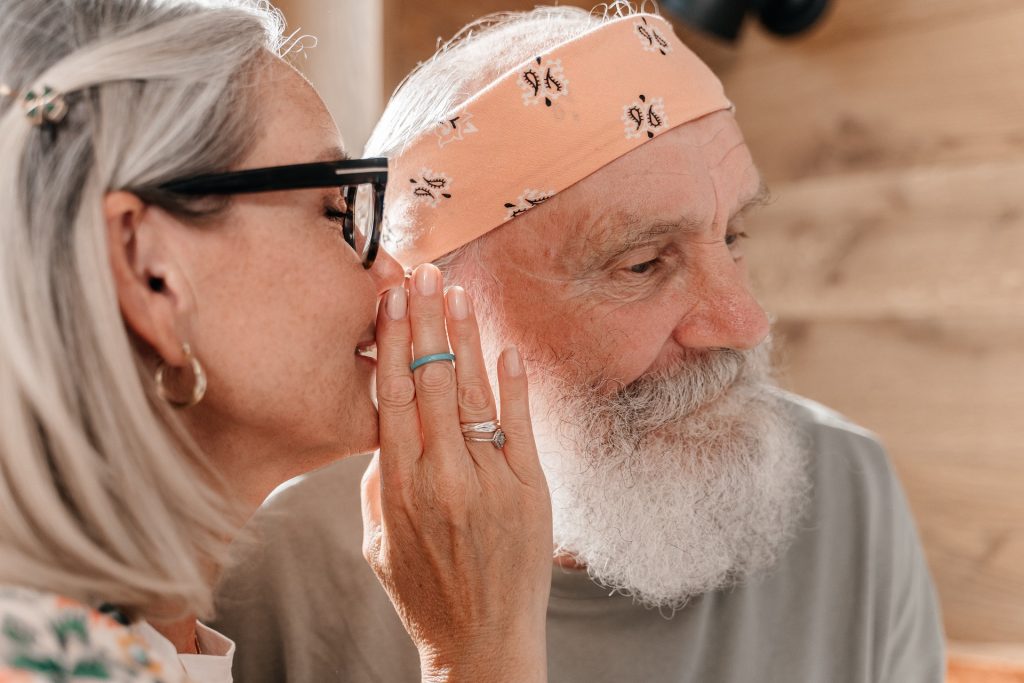Monogamy is a widespread romantic ideal and a social norm that is everyone’s goal in many cultures. True to the motto: in love, engaged, married – until death do us part. But is this concept now outdated? How can sexual freedom be compatible with this relationship model? And do we even have to let social norms dictate how we should live and love?
What does a monogamous relationship mean?
The word monogamy comes from the Ancient Greek and means “single marriage.” It’s used for a conventional relationship where two people exclusively love and only have sex with each other.
In monogamous relationships reliability and faithfulness are key. They ensure stability and security – two basic needs that are very important to us humans.
However, monogamy is also a relationship model which is increasingly at the center of controversial discussions – particularly when it comes to sexual freedom.
Is it possible to express yourself sexually in a monogamous relationship?
This is the question asked most by critics of monogamous relationships. And it’s certainly a valid question, because on the one hand we have a strong need for attachment and security, on the other we also need sexual autonomy, variety, and individuality.
“Sexual exclusivity” seems to be a particular challenge, because love and desire do not obey the same rules. Even when we’re happily in love, we still feel sexually attracted to other people. And we can’t just switch off these feelings. We can only try to control them so they don’t jeopardize our relationship.
Faced with this “dilemma,” there’s really only one important question: are people actually made for monogamous relationships?
Is monogamy outdated?
In the Middle Ages, a romantic connection between two people was not necessarily the main reason for a relationship; material and social considerations were far more important. Love and sexual exclusivity were rare.
Relationships were to consolidate a social rank or ascent, secure succession, or simply increase the estate with land or goods. Not exactly very romantic.
What’s the role of relationships today?
Over the centuries this changed, and both the industrial revolution and capitalism had a major impact. As financial independence increased, the family as a “life-sustaining institution” became less and less important over time. Today we are freer and more independent overall. As society changed over the years so, of course, did relationships.
In the 21st century, social constraints play an ever-smaller role. Instead, individual wishes and needs have become more important. And this naturally changes the way in which we express our sexuality and define relationships.
How has digitization influenced our understanding of relationships?
Dating apps have fundamentally changed our “consumer behavior” when it comes to our choice of partners. In the past, we got to know people by meeting them in person. Today, we meet a pre-selected variety of different partners from the couch through photos and profiles.
With such a large choice in front of us, we generally decide to swipe left or right within a couple of seconds, based on purely superficial characteristics. Gradually we build up a kind of collection – always on the lookout for an even better match.
We also see this consumer behavior in other areas, for example when choosing a movie to watch in the evening: the large range available makes it increasingly difficult for us to find a suitable movie –we often end up spending more time choosing than actually watching the movie. This phenomenon is referred to as the “Netflix effect.”
Apparently limitless freedom can therefore overwhelm us. Does this reduce our ability to compromise and how prepared we are to let ourselves be with one person exclusively? Are we maybe more suited to a relationship model where we can love multiple people?

Polyamory – the only chance for sexual freedom?
On top of many other alternative relationship models, polyamory is currently the most discussed approach. It is an equal romantic relationship between multiple people.
Unlike in an open relationship, there is no main couple which sexually enjoys themselves with other partners as well. In a polyamorous relationship, each person involved loves the others. Equally. Meaning love and sexual freedom for all!
Faithfulness and communication are incredibly important in this modern relationship model. Rather than just two, (at least) three people need to agree their needs with each other and come to a compromise.
Balancing wishes and limits in a polyamorous relationship requires openness, trust, willingness to compromise, and excellent communication above all. In this relationship model jealousy is a challenge that is not to be underestimated and must be handled.
A good basic understanding of yourself and the ability to put one’s self in somebody’s shoes seem to be equally important to successfully navigate this modern relationship model. Polyamory can work under certain circumstances, but is not necessarily for everybody.
So, which relationship model leads the way to sexual freedom?
Perhaps we should start by clarifying what the phrase “sexual freedom” means. Being sexually free doesn’t mean having the freedom to sleep with every potential sexual partner.
It’s actually about being free to reveal your own sexuality – without constraints, feelings of guilt, or shame, free from supposed social norms or a type of general “sexual moral.” Because it’s completely normal to have sexual fantasies and want to express them.
To all intents and purposes, the concept of sexual freedom has nothing at all to do with monogamy, polyamory, or any other relationship models.

Expressing sexual freedom in monogamous relationships – is it possible?
There are many different answers to this question. Firstly, open communication is the most important thing for sexual freedom. Because when we talk about our sexual needs, we lay the foundations for being able to express ourselves sexually. Sometimes an open and honest conversation can even release knots that we have been wrongly carrying around with us.
And of course, there are a lot of opportunities for monogamous couples to make sex more exciting. Trying something together, daring to experiment, and exploring new sexual avenues can be more exciting than an affair or a fling. Intimacy and trust have a really very positive impact on our sexuality.
When we try new things more often, we both experience exactly what made our relationship so exciting back in those early days: the tingle, the excitement, and that irresistible sexual frizzle. This means sex can be incredibly varied even in long-term relationships, and constantly feel like it’s something new.
How do we want to live and love?
Each of us needs to answer this question for ourselves. But we need to remember one thing: it doesn’t matter which relationship model we choose or which gender we are attracted to. Today more than ever we can choose the love and the life that feels right for us. And we should make the most of this freedom!
Image sources: pexels-Ana-Maria-Moroz-1700765, pexels-Rerisson-Hofniel-8595069, pexels-ANTONI-SHKRABA-production-8791187
